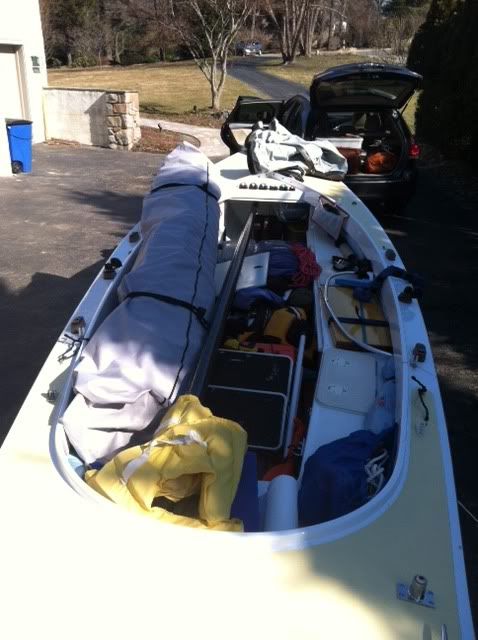So I had a day of errands today… First a trip to West Marine for a chart of Florida Bay. I am convinced that we are going to need fine navigation across this challenging body of water. It’s sort of like a bog with a number of paths which occasionally need log bridges. Which is sorta well marked. The chart actually says it doesn’t bother marking where the stakes and other navigational aides are, because they move so often:{
Next, I stopped by a marine canvasmaker, who fitted Sea Dart for a new cover. Every time I travel I am patching the original canvas cover, and this trip one of the tears extended another foot. The new one will be red (like Sea Dart’s boot stripe), and will be of a much more substantial material (Sunbrella).
Next I proceeded to a boat ramp, and slowly set up the NEW boat. I say NEW because of all the new systems… autopilot, electrical, solar, spinnaker and jibs, oars under the floorboards. It all takes time to set up. But I was rewarded with a very successful sail: I rowed under a bridge with 8ft clearance (just like one of the checkpoints of the race). I proved that the mast lowering support works well, and I was able to set the mast up while underway in about five minutes.
The autopilot worked beautifully. Tomorrow I will see how the battery drain is. I assume the solar panels were working, but they are so darned silent! Finally, I was able to use both spinnaker (with new, lighter sheets) and jib without too much trouble. I just need to transfer all my waypoints from the computer into the GPS. Apparently they aren’t transferred by the SD card, but directly from device to device. I’ve got the cable, so that should be ok.
So, meantime, Sea Dart is out on Huong’s dock, nicely tied up and ready for any shift in the current. Time for bed!









